|

|
Wolverhampton's Blue
Plaques
Bantock Park, Merridale Road,
Merridale Lane, Pelham Street,
St. Mark's Road, Birches Barn Rd.,
Compton Road, Richmond Road
|
 |
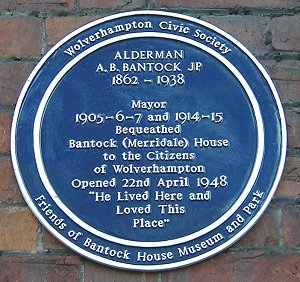
|
Commemorating:
Alderman A.B. Bantock J.P.
Sponsored by:
Friends of Bantock House Museum and Park
Location:
On the front of Bantock House Museum, Finchfield
Road.

|
| Alderman A. Baldwin Bantock was mayor of
Wolverhampton from 1905 to 1907 and 1914 to 1915. Amongst his
many public duties, he joined the Board of the Wolverhampton and
Midland Counties Eye Infirmary in 1892, and was elected Chairman
in 1910. He was also a freeman of the County Borough of
Wolverhampton. On his death in 1938, he left his house to the
town. |
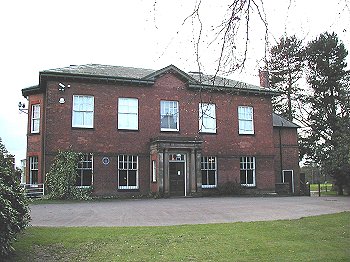 |
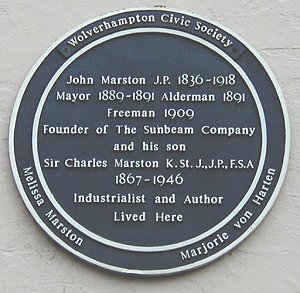 |
Commemorating:
John & Sir Charles Marston
Sponsored by:
Melissa Marston and Marjorie von Harten
Location:
On the front of 'The Oaks', Merridale Road.

|
| John was born at Ludlow on May 6th 1836. In 1851
he became an apprentice with Edward Perry of Richard Perry, Son
& Co., tinsmiths and japanners of Wolverhampton. He later
founded Sunbeamland in Paul Street, and went on to manufacture
the successful Sunbeam bicycles and motorcycles. John was Mayor
of Wolverhampton from 1889 to 1891 and his son Charles was an
enthusiastic archaeologist who received a Knighthood in 1926. |
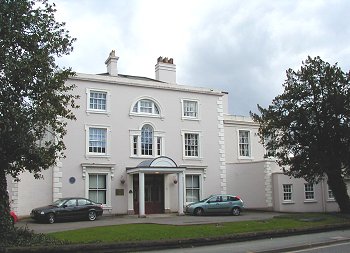 |
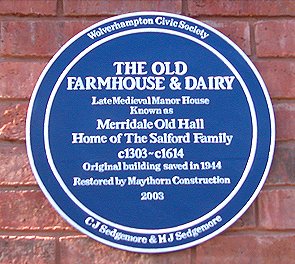 |
Commemorating:
The restoration of Old Merridale Farm.
Sponsored by:
C.J. Sedgemore and H.J. Sedgemore.
Location:
On the front of Old Merridale Farm, on the corner of
Merridale Lane and Merridale Road.

|
| The plaque commemorates an excellent restoration
of what has proved to be Wolverhampton's oldest building. Before
work commenced the building had been derelict for some time and
was in a very poor condition. Its future was uncertain.
During the restoration sandstone walls and foundations were
uncovered, which date back to the 12th century. |
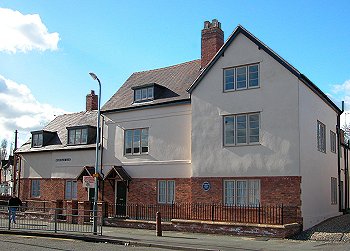 |
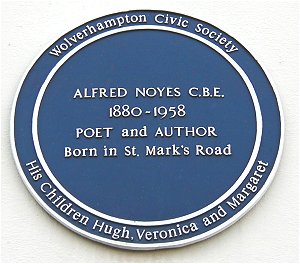 |
Commemorating:
Alfred Noyes C.B.E.
Sponsored by:
His children Hugh, Veronica and Margaret.
Location:
On the front of the Co Operative Funeral Services, St. Mark's
Road. |
| Alfred Noyes was born in Wolverhampton on 16th
September 1880. The family moved to Aberystwyth where his father
became a teacher. He went to Exeter College, Oxford, but failed
to take his degree. His first volume of poems, The Loom of
Years was published in 1902. He joined the Roman Catholic
Church in 1927 and published a book called The Unknown God in
1934. His autobiography Two World's For Money was published in
1953. He died on 25th June 1958. |
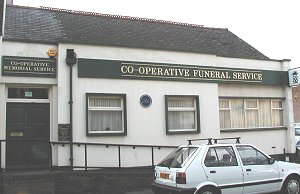
The plaque on front of the Co Operative
Funeral Services in St. Mark's Road. |
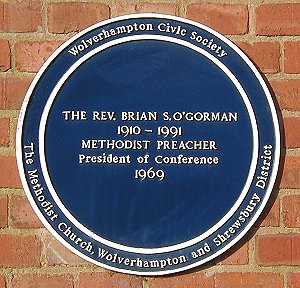 |
Commemorating:
The Rev. Brian S. O'Gorman, preacher.
Sponsored by:
The Methodist Church Wolverhampton and Shrewsbury District.
Location:
On the front of Beckminster Church, on the corner of Birches
Barn Road and St. Phillip's Avenue.
|
| The church tower showing the plaque. |
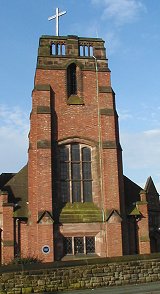 |
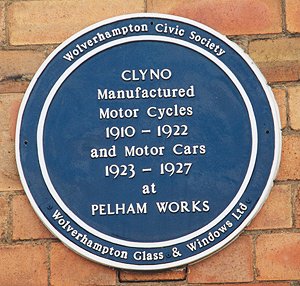 |
Commemorating:
Clyno Cars
Sponsored by:
Wolverhampton Glass & Windows Limited
Location:
Pelham Works, Pelham Street.

|
| Note: Clyno never occupied Pelham Works. Their
factories were at the other end of Pelham Street. |
| Clyno was founded by cousins A. P. Smith and
F. W. A Smith in 1909, at Thrapston, Northants. The company
manufactured motorcycles using engines produced by the
Stevens Motor Manufacturing Company of Pelham Street. On 15th
October 1910 the business was transferred from Thrapston to the
Steven's old works in Pelham Street. |
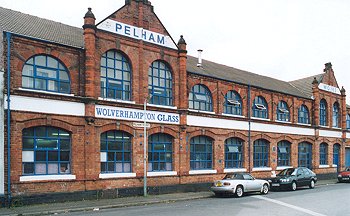 |
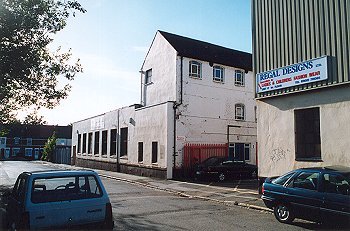 |
This photograph shows the Clyno works as they are today. The
company also occupied Fort Works on the opposite side of the
road. The company was initially very successful, but the
motorcycle market collapsed after the first world war. Frank
Smith was interested in producing cars and formed the
Clyno Engineering Company (1922) Limited. |
| This photograph shows Clyno cars leaving the
works. In its heyday Clyno was the third largest car
manufacturer in the UK after Austin and Morris. It's price
cutting policy led to financial problems and the company went
into liquidation on 11th February 1929. During its lifetime it
had sold over 15,000 motorcycles and 40,000 motor vehicles. |
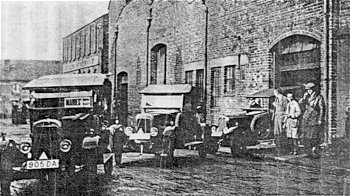 |
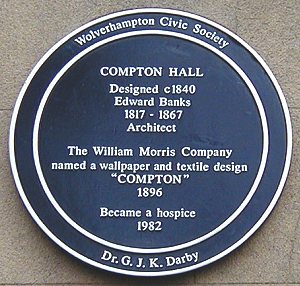 |
Commemorating:
Compton Hall
Sponsored by:
Dr. G.J.K. Darby
Location:
Compton Hospice, Compton Road

|
| Compton Hall was built between 1840 and
1850 by leading Wolverhampton architect Edward Banks, for Thomas
Elwell, who was a hardware merchant. William Morris designed the
last of his wallpapers for this house in 1896 and called it
"Compton". The Hall was once occupied by Sir John Morris, the
Mayor of Wolverhampton who was knighted by Queen Victoria on her
visit to Wolverhampton in 1866. The Hall became Compton Hospice
in 1982 and was officially opened by the Duchess of Kent, who is
the Patron. |
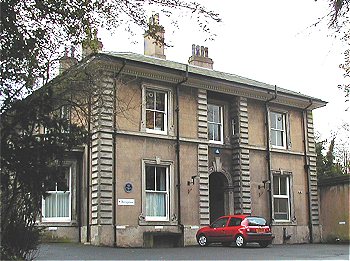 |
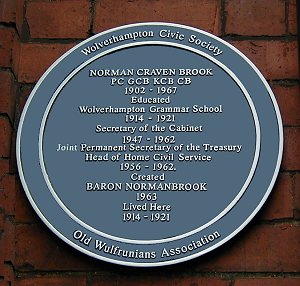 |
Commemorating:
Norman Craven Brook P.C. G.C.B. K.C.B. C.B.
Sponsored by:
The Old Wulfrunians Association
Location:
104 Richmond Road |
| The plaque commemorates Norman Craven Brook P.C.
G.C.B. K.C.B. C.B., who lived here from 1914 to 1921 and was
educated locally at the Grammar School in Compton Road.
He was
Secretary of the Cabinet from 1947 to 1962 and Joint Permanent
Secretary of the Treasury, and Head of the Home Civil Service
from 1956 to 1962. In 1963 he was created Baron NormanBrook.
The photograph shows the plaque on the front of 104 Richmond
Road. |
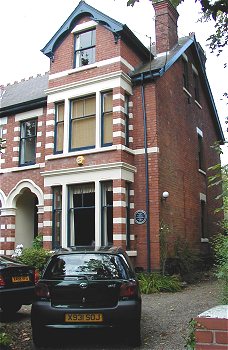 |
|